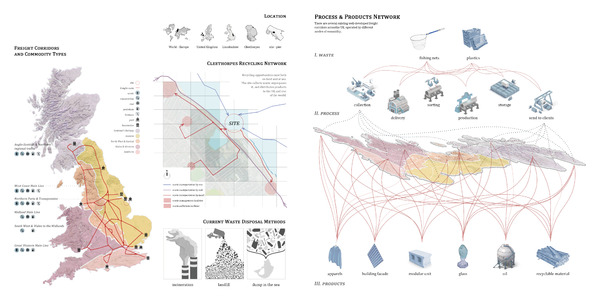Plastic Mania
Piers, once thought to be the pinnacle of technology, have fallen into disrepair and no longer perform the critical societal purpose that they once did. Despite this, we are increasingly turning to our oceans as a critical component of the clean energy revolution in order to reach carbon reduction targets. What does the future pier look like and how does it help to address environmental and societal problems?
My answer is to employ the site as an underutilised infrastructure that should be substantially re-engaged to offer a thoughtful and holistic link between land and sea. My future pier is a waste repurposing factory that collects ocean debris and converts it into recyclable construction materials, which are then delivered across the UK to alleviate the housing shortage and other societal issues. Besides the factory, the scheme also includes a Research and Development section, as well as a tourist centre where architects and specialists can physically evaluate the repurposed materials.
The choice of material responds to the essence of this scheme, which is to actively experiment with and reuse what has been considered the waste. For instance, the structural component is made of biaxial voided concrete, a type of reinforced concrete slab which incorporates air-filled plastic voids to reduce the volume of concrete required. The façade louvres are interchangeable plastic panels that allow for a considerable level of customisation. By applying those repurposed materials to the architecture, it becomes a living example to show that waste, such as plastics, can be valuable.


